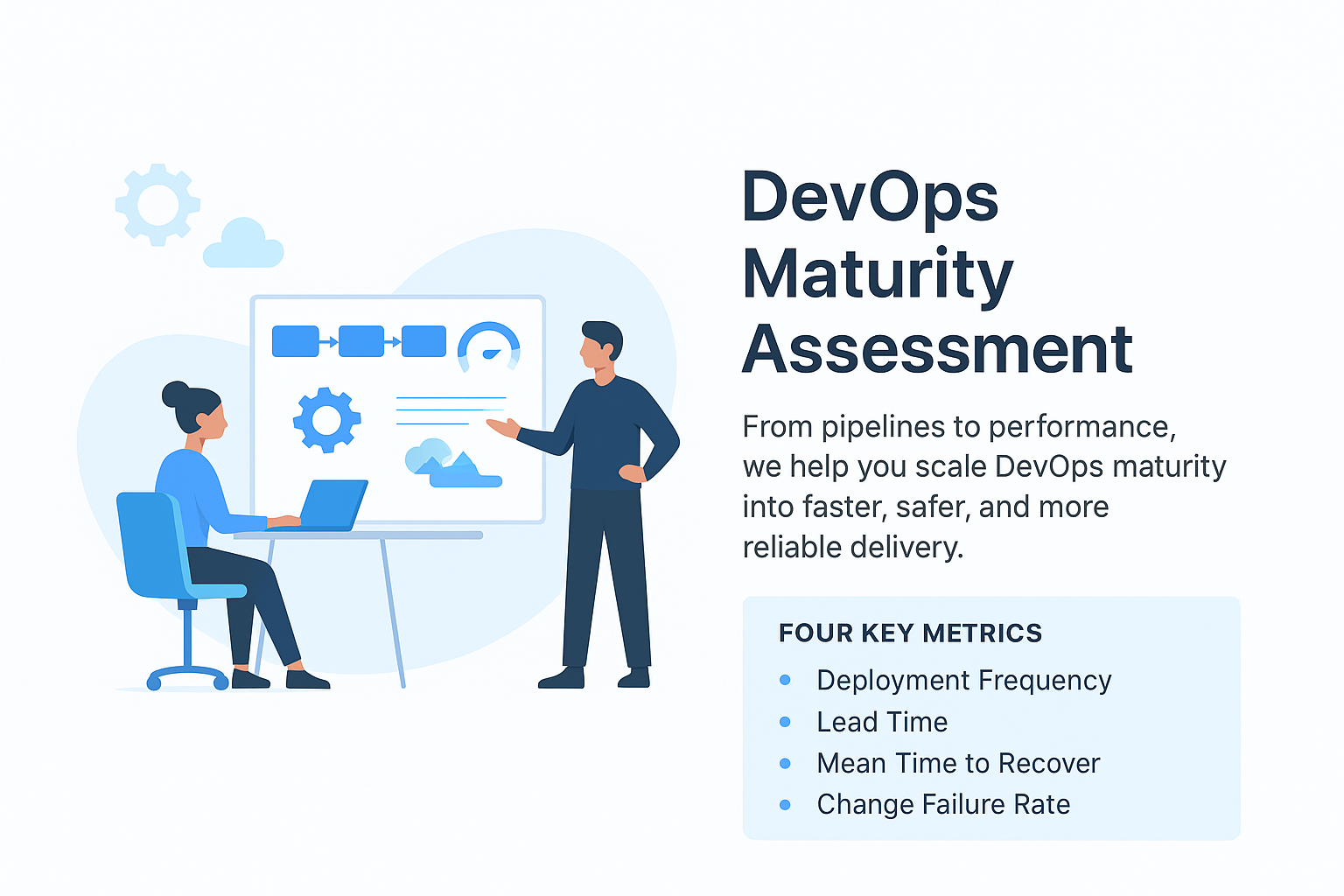
DevOps maturity goes far beyond tools and automation — it determines how effectively an organization can deliver business value at speed and scale. Research from the DORA State of DevOps Reports consistently shows that elite DevOps performers outpace low performers by orders of magnitude: deploying far more frequently, recovering from incidents much faster, and operating with significantly lower change failure rates.
Our DevOps Maturity Assessment provides a clear, evidence-based baseline of where your teams stand today and identifies practical, prioritized steps to accelerate transformation. We look holistically at people, processes, and technology across the delivery lifecycle — from code commit through CI/CD pipelines to production deployment. The focus is not just on “doing DevOps,” but on enabling business agility, faster time-to-market, and reliable customer outcomes.
Our Maturity Assessments are not limited to tools; they draw on interviews, discussions, and real-world observations, combined with our expertise, to reveal your true Agile maturity and chart a clear, tailored ‘To-Be’ state for your organization.
What makes it different?
Unlike generic checklists, our approach combines real-world benchmarks with tailored insights for your organization. We evaluate not just the tooling (CI/CD pipelines, monitoring, infrastructure as code) but also how effectively teams collaborate, manage risks, and deliver value continuously. We bring an end-to-end perspective that links engineering practices, cultural readiness, and governance to business outcomes, giving you a roadmap that is both actionable and sustainable.
Outcomes you can expect
- A clear maturity baseline across culture, automation, measurement, and sharing (CAMS dimensions).
- Identification of critical gaps and prioritized improvement opportunities.
- Recommendations to optimize CI/CD pipelines for speed and reliability.
- Improved collaboration across development, operations, and business teams.
- Roadmap to reduce lead time, increase deployment frequency, and improve recovery from failures.
- Tangible steps to align DevOps practices with business objectives, ensuring measurable ROI.
